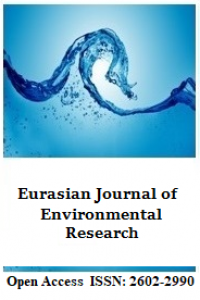Öz
Kaynakça
- BREEAM,https://www.breeam.com/BREEAMInt2016SchemeDocument/#resources/output/10_pdf/a4_pdf/nc_pdf_printing/sd233_nc_int_2016_print.pdf [Accessed 10 March 2019].
- ÇEDBİK,https://cedbik.org/static/media/page/12/attachments/edbik-konut-sertifika-kilavuzu-2018-v-1-06-06-2018.pdf?v=060618014756 [Accessed 10 March 2019].
- Dixon, W. (2010). The Impacts of Construction and the Built Environment. Briefing Notes, Willmott-Dixon Group.
- GreenMetric 2018, https://www.erciyes.edu.tr/Duyuru-Haber/Universitemiz-GreenMetric-2018-Siralamasinda-Turki/9749 [Accessed 10 March 2019].
- IGBC 2012, https://igbc.in/igbc/ [Accessed 17 March 2014].
- Koç Aslan, D. and Arslan Selçuk, S. (2018). “A Biomimetic Approach to Rainwater Harvesting Strategies Through theUse of Buildings.” Eurasian Journal of Civil Engineering and Architecture, Vol. 2, No.1, pp. 27-39.
- LEED,https://www.usgbc.org/resources/leed-v4-building-design-and-construction-current-version [Accessed 10 March 2019].
- Özçuhadar, T. (2007). Sürdürülebilir Çevre için Enerji Etkin Tasarımın Yaşam Döngüsü Sürecinde İncelenmesi, Master Thesis, Istanbul Technical University, Istanbul.
- Öztürk Sarı, S. (2013). Enerji Etkin Tasarımda Bir Arakesit: Toprak Örtülü Yapılar, Master Thesis, Istanbul Technical University, Istanbul.
- Say, C. and Wood, A. (2008). “Sustainable Rating Systems Around the World”. Council on Tall Buildings and Urban Habitat Journal (CTBUH Review), Vol. 2, pp. 18-29.
- Schttich, C. (1997). “Thoughts on Ecological Building.” A+U: Architecture and Urbanism, Vol. 320, No. 5, pp.19.
- Sev, A. (2009). Sürdürülebilir Mimarlık, YEM Publishing, Istanbul, Turkey.
- Tokuç, A. (2004). İzmir’de Enerji etkin Konut Yapıları İçin Tasarım Kriterleri, Master Thesis, Dokuz Eylül University, İzmir.
- Yüksek, İ. and Keke, D.G.B. (2016). “Yapılarda Enerji Etkin Peyzaj Uygulamaları.” Sosyo-Ekonomik Stratejiler IV: Tasarım Stratejileri, İ. Yüksek and H. Güler İplikçi, Ed., No: 2017/33, IJOPEC Publication, London, pp:9-48.
DESIGNING FOR SUSTAINABILITY ON A UNIVERSITY CAMPUS: ERCIYES UNIVERSITY EAST CAMPUS SOCIAL CENTER PROJECT
Öz
Activities in the construction
sector have several negative effects on the natural environment because they
consume energy and resources. However, the intention of
sustainable practices is to produce nature-friendly buildings with reduced
negative effects on human health and the environment. There are a variety of
evaluation and certification systems in the world and in Turkey that are
addressed to identify the environmental sensitivity level of the buildings that
were designed in accordance with sustainability criteria. In this study, the principles for
sustainable building design are determined as sustainable land use, energy
efficiency, water efficiency, material selection, waste management, indoor air
quality and green transportation. The city of
Kayseri in central Anatolia was selected as a working area. A project that was
designed in Erciyes University campus in Kayseri was examined within the
context of these criteria. It can be
expressed that the Erciyes University East Campus Social Center Project meets ecological
and sustainable design criteria. Considering Erciyes University’s sensitivity
and effort to become a sustainable campus, it is thought that this project can
be accepted as a starting point and will act as an example for future projects.
Anahtar Kelimeler
Erciyes University Green Campus Design for Sustainability Sustainable Building
Kaynakça
- BREEAM,https://www.breeam.com/BREEAMInt2016SchemeDocument/#resources/output/10_pdf/a4_pdf/nc_pdf_printing/sd233_nc_int_2016_print.pdf [Accessed 10 March 2019].
- ÇEDBİK,https://cedbik.org/static/media/page/12/attachments/edbik-konut-sertifika-kilavuzu-2018-v-1-06-06-2018.pdf?v=060618014756 [Accessed 10 March 2019].
- Dixon, W. (2010). The Impacts of Construction and the Built Environment. Briefing Notes, Willmott-Dixon Group.
- GreenMetric 2018, https://www.erciyes.edu.tr/Duyuru-Haber/Universitemiz-GreenMetric-2018-Siralamasinda-Turki/9749 [Accessed 10 March 2019].
- IGBC 2012, https://igbc.in/igbc/ [Accessed 17 March 2014].
- Koç Aslan, D. and Arslan Selçuk, S. (2018). “A Biomimetic Approach to Rainwater Harvesting Strategies Through theUse of Buildings.” Eurasian Journal of Civil Engineering and Architecture, Vol. 2, No.1, pp. 27-39.
- LEED,https://www.usgbc.org/resources/leed-v4-building-design-and-construction-current-version [Accessed 10 March 2019].
- Özçuhadar, T. (2007). Sürdürülebilir Çevre için Enerji Etkin Tasarımın Yaşam Döngüsü Sürecinde İncelenmesi, Master Thesis, Istanbul Technical University, Istanbul.
- Öztürk Sarı, S. (2013). Enerji Etkin Tasarımda Bir Arakesit: Toprak Örtülü Yapılar, Master Thesis, Istanbul Technical University, Istanbul.
- Say, C. and Wood, A. (2008). “Sustainable Rating Systems Around the World”. Council on Tall Buildings and Urban Habitat Journal (CTBUH Review), Vol. 2, pp. 18-29.
- Schttich, C. (1997). “Thoughts on Ecological Building.” A+U: Architecture and Urbanism, Vol. 320, No. 5, pp.19.
- Sev, A. (2009). Sürdürülebilir Mimarlık, YEM Publishing, Istanbul, Turkey.
- Tokuç, A. (2004). İzmir’de Enerji etkin Konut Yapıları İçin Tasarım Kriterleri, Master Thesis, Dokuz Eylül University, İzmir.
- Yüksek, İ. and Keke, D.G.B. (2016). “Yapılarda Enerji Etkin Peyzaj Uygulamaları.” Sosyo-Ekonomik Stratejiler IV: Tasarım Stratejileri, İ. Yüksek and H. Güler İplikçi, Ed., No: 2017/33, IJOPEC Publication, London, pp:9-48.
Ayrıntılar
| Birincil Dil | İngilizce |
|---|---|
| Konular | Mimarlık |
| Bölüm | Makaleler |
| Yazarlar | |
| Yayımlanma Tarihi | 12 Haziran 2019 |
| Yayımlandığı Sayı | Yıl 2019 Cilt: 3 Sayı: 1 |
Kaynak Göster
Creative Commons License
Attribution-NonCommercial-ShareAlike 4.0 International (CC BY-NC-SA 4.0)

Creative Commons Attribution-NonCommercial-ShareAlike (CC BY-NC-SA) License lets others remix, tweak, and build upon the work non-commercially, as long as they credit the author(s) and license their new creations under the identical terms.


